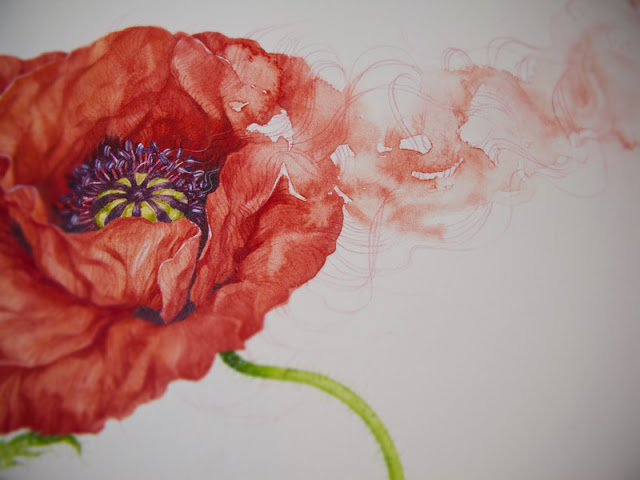
Awakening can not be induced in others with words, that Awakening in which the "Self" is recognized in itself, being as it really is, complete, pure, real, perfect, without fear and without desires.
But "tending towards" can not be "helped" by repressing fears and desires. The disappearance of fears and desires must occur spontaneously, when discovering and loving our true Self, we are no longer afraid of anything and we no longer have any desires.
Thus without supporting trials or feeling stressed we can follow the two paths: that of love towards the outside and that of knowledge towards the inside. What then I am only one.
Accompanying us along the path with "the others", all the others, who are part of us.
By understanding ourselves and by knowing ourselves, we know and understand others, and by knowing others we understand ourselves, in dark and luminous moments, and we can reflect and make others "reflect" in us.
We can safely ignore our ego, which always leads us to oppose ourselves, to differentiate ourselves, to put ourselves in contraposition with what we blindly see different, but which is part of the same One. Sometimes the ego is unmasked and then a loud laugh comes out of the heart: I discovered you! Even though he is often still there to take, unmotivately and maliciously, his space again.
Everyone plays his part in the game of Consciousness. And when we come to know each other and accept ourselves completely, our actions are in tune with the circumstances but they have no particular purpose, we do not need to fight against someone, we can love ourselves indefinitely and unconditionally and the rest of the world as well. Showing our true qualities, without fear of consequences and without expectations of results.
Life is a game in which playing one's part is essential.
The evolution would proceed like this and it can proceed in this way not only by trial and error, but through that intuitive awareness, which pulls the whole cellular and mental body forward ... ..
Complementarity leads to equilibrium, to the clear vision of the two aspects, to spirit and matter, to darkness and light, to motion and inertia, to the understanding that we are all united and, as the wise man says: "pain and pleasure they are the ridges and dips in the ocean of bliss. Deep there is absolute fullness "(Nisargadatta Maharaj)
Caterina Regazzi and Paolo D'Arpini

Testo italiano
Il Risveglio non può essere indotto negli altri con le parole, quel Risveglio in cui il “sè” si riconosce in Se stesso, l’essere come veramente è, completo, puro, reale, perfetto, senza paure e senza desideri.
Ma il “tendere verso” non può essere “aiutato” reprimendo paure e desideri. La scomparsa di paure e desideri deve avvenire spontaneamente, quando scoprendo e amando il nostro vero Sé, non abbiamo più paura di nulla e non abbiamo più desideri.
Così senza sostenere prove o sentirci stressati possiamo seguire le due vie: quella dell’amore verso l’esterno e quella della conoscenza verso l’interno. Che poi sono una sola cosa. Accompagnandoci lungo il percorso con “gli altri”, tutti gli altri, che fanno parte di noi. Capendo noi stessi e conoscendoci conosciamo e capiamo gli altri, e conoscendo gli altri capiamo noi stessi, nei momenti bui e in quelli luminosi, e possiamo rifletterci e far “riflettere” gli altri in noi.
Possiamo tranquillamente ignorare il nostro ego, che ci porta sempre e comunque a contrapporci, a differenziarci, a metterci in opposizione con ciò che noi, ciecamente, vediamo diverso, ma che fa parte dello stesso Uno. A volte l’ego viene smascherato ed allora esce dal cuore una sonora risata: ti ho scoperto! Anche se lui spesso è ancora lì a prendersi, immotivatamente e dannosamente, di nuovo, il suo spazio.
Ad ognuno compete la sua parte nel gioco della Coscienza. E quando arriviamo a conoscerci e accettarci completamente, le nostre azioni sono consone alle circostanze ma non hanno finalità particolari, non abbiamo bisogno di combattere contro qualcuno, possiamo amare indefinitamente e senza condizioni noi stessi come pure il resto del mondo. Manifestando le nostre vere qualità, senza timore delle conseguenze e senza aspettative di risultati.
La vita è un gioco in cui recitare la propria parte è essenziale.
L’evoluzione procederebbe così e può procedere così non tanto o non solo per tentativi ed errori, ma tramite quella consapevolezza intuitiva, che tira l’intero corpo cellulare e mentale in avanti...
La complementarietà porta all’equilibrio, alla visione chiara dei due aspetti, allo spirito e alla materia, al buio e alla luce, al moto e all’inerzia, nella comprensione che siamo tutti uniti e, come dice il saggio: “dolore e piacere sono le creste e gli avvallamenti nell’oceano della beatitudine. In profondità c’è la pienezza assoluta” (Nisargadatta Maharaj)
Caterina Regazzi e Paolo D’Arpini












